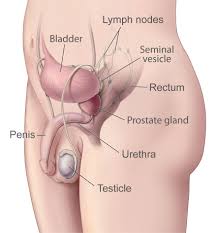Game two - in which I lie down in a tunnel
Fortunately these days magnetic resonance imaging (MRI) scanners, once leading edge technology, are relatively ubiquitous and are quite good at identifying clusters of abnormal cells - tumours.
These machines subject one to a succession of very high magnetic pulses (typically 1.5 or 3 teslas (T)).
High magnetic fields are relatively harmless to humans - unlike x-rays.
As it is relatively harmless, the process can take a lot longer than a computed axial tomography (CAT) scan, that employs x-rays (in a similar looking machine) and thus MRI generates superior images for organ differentiation and tumour identification - tumours that a CAT scan may not see.
In order to achieve the very high magnetic flux required, coils of superconducting wire (niobium-titanium or niobium-tin) are used and these must be cooled using liquid helium (4.2 degrees above absolute zero).
As long as one is not claustrophobic there is no sensation except for the loud noise generated by the pulsing of superconducting coils and in some machines the helium pump that delivers liquid helium to cool the coils. Ear protection and music is provided so that it can be pleasantly relaxing. Perhaps like one of those immersion tanks provided by spas?
An MRI scan turns out to be very interesting physics and quite good fun.
How does it work?
I suppose everyone with a basic education knows that the nucleus of an atom consists of protons (positively charged particles) and neutrons (having mass but no charge). Thus the charge carried by a nucleus may be more to one side than the other. Under a strong magnetic field these nuclei and therefore their atoms and molecules will try to line up, like iron filings with a magnet. Atoms and molecules that are magnetically polar, as a result of the arrangement of protons in their nucleus (like hydrogen and therefore water), are momentarily rotated by the magnetic flux, then spring back. The effect varies according to the arrangement of molecules and therefore the type of body cell
These events can be observed using radio waves, as in radar. To do this harmless microwave frequency radio waves, think of Bluetooth on your phone, bathe the patient and interact with the aforesaid atoms, molecules and cells. Externally placed antennas receive returned radio waves to build a map of a cross sections of the patient's body, as if sliced, to reveal one's vitals, in a similar way to those produced by the familiar radar scanners used in boats and aircraft.
The main limitation on an MRI scan is the need to exclude any ferromagnetic metals or metallic loops in which high currents could be induced. Things like watches jewellery and heart pacemakers can be destroyed. Those with such devices must not approach the machine. Warnings of imminent death for pacemaker wearers abound.

